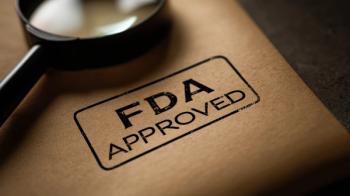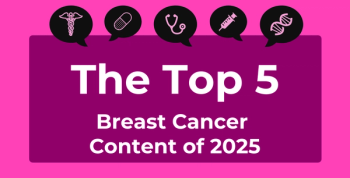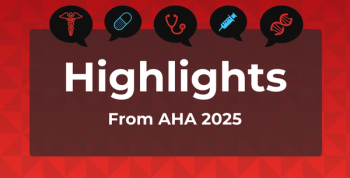
Legalizing Marijuana: How Recreational Marijuana Legalization Changes the Medical Use Landscape
With recreational marijuana dispensaries becoming more common across the country, the benefits of medical marijuana could be neutralized. How can doctors and dispensaries make sure the benefits of medical marijuana are still felt in a post-legalization nation?
The legalization of recreational marijuana has become a hot button topic in politics, with 18 states and Washington, DC,
With 37 states already legalizing
Medical Marijuana: A Valuable Medical Industry
With both forms of marijuana becoming more common and accessible, it’s important to note the differences between them. Recreational marijuana is entirely made of
“The main difference between medical and recreational use is the end desired result and how it is consumed,” said Gregory Carter, MD, MS, a doctor at Providence Medical Center in Spokane, Washington. “Medical users seek relief from a symptom and would typically use edibles…whereas recreational users often will smoke with the end result of getting high [or intoxication].”
Medical marijuana requires state registration before a prescription is written and can be used; approximately
Mitchell Prywes, MD, medical director at the Center for Pain Rehabilitation, said that marijuana doesn’t have the capability of mortality overdose the way that opiates do, which makes it an appealing medication to prescribe for pain.
He also said that the
Although future research is needed, this relationship demonstrates how instrumental marijuana is and can be to treating numerous medical conditions. But with legal recreational marijuana on the rise, can the effectiveness of medical marijuana be reduced?
Recreational Marijuana a Potential Medical Disruptor?
Marijuana had limited legality in the United States prior to 2012, when Colorado and Washington became the
However, this recent boom in the recreational marijuana industry has hurt the medical marijuana industry, according to Jordan Tishler, MD, president and CEO of
“The industry wants to treat everyone as a recreational user and would like to marginalize physician care and oversight. This is all in an attempt to sell the most cannabis they can,” he said. “The result of their approach is larger sales, escalating tolerance, and eventually the likely development of cannabis use disorder.”
Tishler said that many recreational users develop symptoms that could be effectively treated by medical marijuana. However, their previous use of marijuana often leads to so much tolerance that medical marijuana is no longer effective, which he says is happening more often now that recreational marijuana is legal.
According to
Tishler also said that some dispensaries, both medical and recreational, are giving out medical advice that they are not qualified to give in order to sell more marijuana products. “What really upsets me is when I meet a patient who was cannabis naïve 6 to 12 months ago but now, via recreational self-medicating, has gotten themselves behind the eight ball,” he said.
Recreational marijuana legalization has proven to be a new roadblock in the effort to make medical marijuana a legitimate treatment for patients of all ages. Finding a way for both kinds of dispensaries to work together and coexist may be a vital to ensuring effective medical treatment.
Working Together: What Does It Entail?
How can medical and recreational dispensaries work together to make sure that all consumers of marijuana, on both a medical and recreational level, get what they need without over-consumption or eventual high tolerance coming into play?
Tishler suggests that marijuana should have a dispensing system that acts more like a pharmacy. “We need to be able to, and be required to, write an actual prescription and know that the dispensary will honor it as written,” he said.
In
“We were one of the first states to create a pharmaceutical model, which means that the 4 producers in our state are set up like pharmaceutical companies and they have to meet very high quality standards,” said Prywes. “And similarly, all dispensaries are treated like pharmacies and required to have licensed, trained pharmacists.”
This step is one way in which states can make sure that a focus on the health and safety of their consumers is a top priority. However, this requirement isn’t found everywhere. Which emphasizes the importance of communication between marijuana users and physicians trained in the use of medical marijuana to ensure that the right choices on dosage and medication are made.
Prywes said, “It must start with a true doctor-patient relationship….Having a doctor-patient relationship means you’ve thoroughly evaluated the patient, you understand what they’ve had, what they haven’t had, what their experience has been….It’s not a rubber stamp.” He said that these open conversations can also potentially exclude medical marijuana for patients who have a history of drug or substance abuse.
Tishler also said open conversations between patients and doctors about marijuana use in a non-judgmental manner can help patients get properly assessed for potential medications, starting with doctors taking the initiative in medical marijuana.
“Front-line clinicians need to start suggesting cannabis to their patients proactively instead of reaching for more dangerous [such as opioids] or less effective [such as gabapentinoids] alternatives….We need to start volunteering so that our patients get the care they need,” he said.
He also said that clinicians referring to cannabinoid specialists, much in the same way that you would refer patients to a cardiologist or dermatologist, could help make sure that patients are getting the proper cannabinoid care.
The ease of access can make it easy to consume more recreational or medical marijuana than is beneficial, which is why proper guidance by health care professionals alone, initiated by both parties, can get patients the health care that they need while also preventing over usage or not getting the care that they may benefit from.
References
- Hansen C, Alas H, Davis E. Where is marijuana legal? A guide to marijuana legalization. U.S. News. April 20, 2022. Accessed May 20, 2022.
https://www.usnews.com/news/best-states/articles/where-is-marijuana-legal-a-guide-to-marijuana-legalization - Kilgannon C, Morris J, Piccoli S. Early lines and free doughnuts: legal marijuana sales begin in New Jersey. New York Times. April 21, 2022. Accessed May 20, 2022.
https://www.nytimes.com/2022/04/21/nyregion/nj-marijuana-sales.html - Avery D. Where marijuana is legal in the US. CNET. April 21, 2022. Accessed May 20, 2022.
https://www.cnet.com/news/politics/where-marijuana-is-legal-in-the-us/ - DiLonardo MJ. CBD vs. THC: what’s the difference? WebMD. December 15, 2021. Accessed May 20, 2022.
https://www.webmd.com/pain-management/cbd-thc-difference - Medical Marijuana Patient Numbers. Marijuana Policy Project. May 27, 2021. Accessed May 20, 2022.
https://www.mpp.org/issues/medical-marijuana/state-by-state-medical-marijuana-laws/medical-marijuana-patient-numbers/ - Grinspoon P. The endocannabinoid system: essential and mysterious. Harvard Health Publishing. August 11, 2021. Accessed May 20, 2022.
https://www.health.harvard.edu/blog/the-endocannabinoid-system-essential-and-mysterious-202108112569 - Berke J, Gal S, Lee YJ. Marijuana legalization is sweeping the US. See every state where cannabis is legal. Insider. February 23, 2022. Accessed May 20, 2022.
https://www.businessinsider.com/legal-marijuana-states-2018-1 - Brennan D. How to avoid high tolerance to cannabis. WebMD. May 15, 2021. Accessed May 20, 2022.
https://www.webmd.com/mental-health/addiction/how-avoid-high-tolerance-cannabis - Dispensary Facility and Producer FAQs. Department of Consumer Protection. Accessed May 20, 2022.
https://portal.ct.gov/DCP/Medical-Marijuana-Program/Dispensary-Facility-and-Producer-FAQs
Newsletter
Stay ahead of policy, cost, and value—subscribe to AJMC for expert insights at the intersection of clinical care and health economics.









































